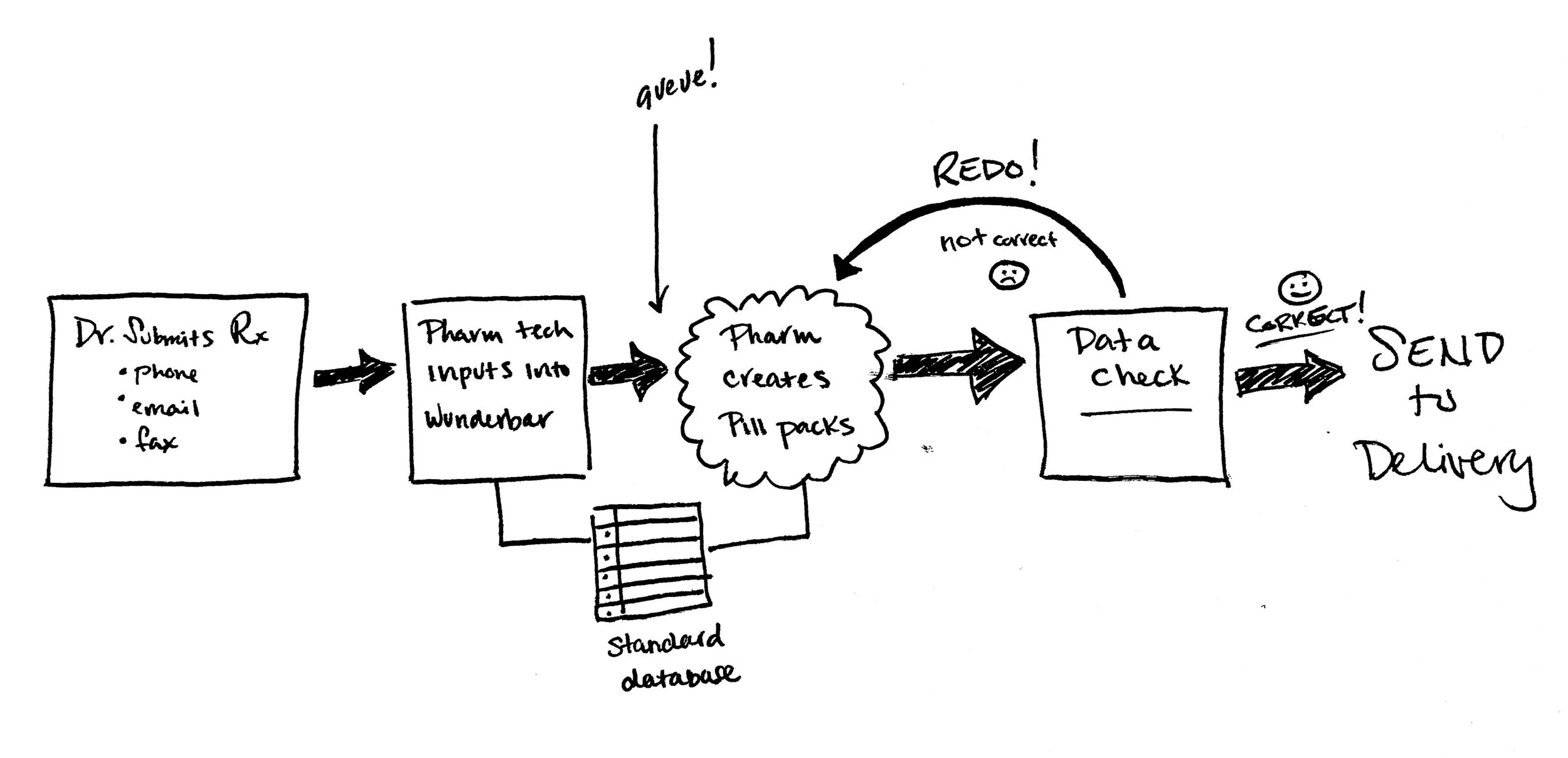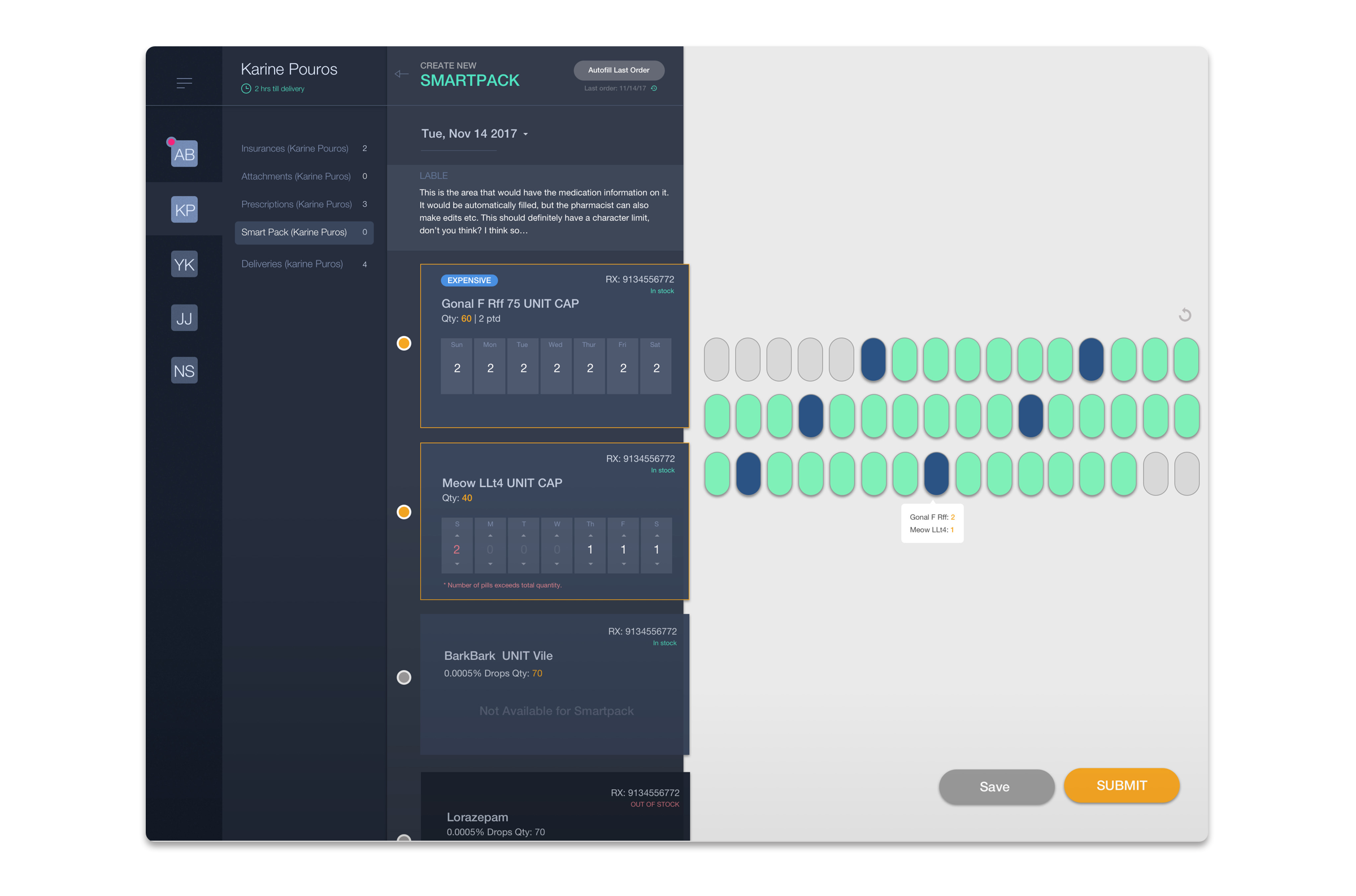Alto Challenge
Design and ideate a simple interface for our pharmacists to select which prescriptions are packed by the machine, and what day/times they should be taken. There should also be a component that allows the pharmacist to see an overview of what the patient is taking. We can assume that the dosing schedule repeats on a weekly basis and the entire pack consists of 28 days.
"We want to provide our customers with the best service, which means quick, free, and accurate pharmacy delivery."
FRAMING THE PROBLEM
Is the problem human? What is the root cause?
How do we know this is the correct problem?
How can we measure its success?
Promote Speed & Efficiency
To corner a market reliant on delivery to achieve user satisfaction, the speed in which it gets out the door and into their hands is a key variable in product success. The quicker somebody is able to input and fill a Rx, the faster it can get down the pipeline. Designing for task time reduction results in faster delivery & happier customers.
How?
- Reduce necessary actions
- Automate repetitive tasks
- Pattern flow for bulk action
- Reflect patterns human is used to
- Make easy to scan (accessibility)
- User color instead of text when possible
How to measure:
- Time spent completing tasks within "create SmartPack"
- Time it takes from intake to sending to data check.
Reduce Human Error
One of the biggest pain points for both system and end user is having a hiccup in the pipeline. A slower delivery is forgivable. A WRONG delivery is not acceptable, particularly when the materials are medication related. Designing to reduce mistakes is necessary in helping the human components of the process stay on track.
How?
- Make fields required
- Autocorrect
- Call out potential errors before submission
- During bulk pattern flow, signal change
- Keep important info LARGE and prominant
- "Punishment" vs "Reward" (re-dos)
How to measure:
- Number of "redos"
- Number of saved, unprinted packs?
Consider the Whole System
Alto is making some impressive strides toward systemizing their order & delivery flow toward greater speed and accuracy. Designing a solution that takes the whole of the process into consideration allows for functional coordination, ensuring a better end result.
How?
- Allow pipeline to communicate needs
- Alert when item is "stale" (visual, sound, phone)
- Measure and track snags for fixing
- Reduce "re-dos"
- Alert when there is a line backup
How to measure:
- How many packs had to be done the next day
- Stale orders in queue (time it takes to get to the order after its been submitted)
fulfillment Flow
Constraints
- Alto will only hold up a line for about 30 min. If something needs to be redone, it has that window, or else it will be VERY LATE or need to be done the following day.
- Made for desktop web, most computer sizes in the office can account for 1366px.
- HIPPA guidelines require for a screen to blank health info if left for too long without activity.
- Pharmacists are accustomed to seeing patterns of FREQUENCY due to the nature of manually filling the machine.
- Pharmacists usually bulk fill, at an average of about 10 a day (as of now).







